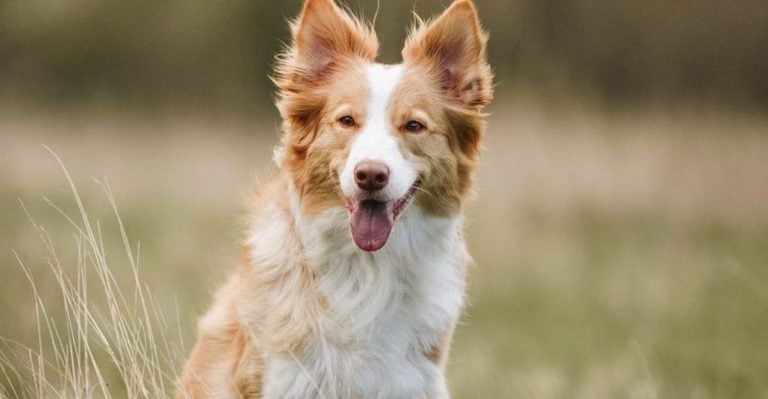15 Dog Breeds That Look Cute But Require Serious Commitment

Not every cute dog is an easy addition to the family. Behind those bright eyes and fluffy ears could be a handful waiting to happen. Before you fall for a pretty face, it helps to know which breeds need more than basic care. Let’s explore 15 breeds that keep owners on their toes.
Border Collies

Border Collies need more than physical activity—mental challenges are essential. Bred for herding, this breed thrives on quick thinking and problem-solving. Without structured tasks, mischief often follows. Activities like agility, puzzle games, and trick training provide needed stimulation. A simple game of fetch won’t satisfy such a sharp and focused mind.
Siberian Huskies

Siberian Huskies are high-energy dogs with a talent for escape and an impressive work ethic. Designed to pull sleds through tough terrain, they thrive when given intense physical challenges. Standard barriers rarely stop them. Activities like obstacle courses or cart-pulling help channel energy and reduce unwanted digging or boundary testing.
Akitas

Few breeds reflect loyalty and self-respect the way Akitas does. These powerful dogs were originally guardians for Japanese nobility, a role that shaped their proud independence. Strong-minded by nature, Akitas respond poorly to inconsistent rules or overly soft handling. A home that establishes firm routines and respects boundaries is essential.
Dalmatians

When Dalmatians trotted beside 18th-century carriages, endurance was their greatest asset. Today, their energy can surprise new owners who underestimate their stamina. Beyond exercise, Dalmatians also need careful diet management to protect against urinary issues common in the breed. Their dense, spotted coats shed year-round, adding grooming responsibilities.
Great Danes

Size alone does not capture the full responsibility of owning a Great Dane. Their giant frames put stress on joints from an early age, requiring supportive bedding and thoughtful feeding practices. Special attention must be given to prevent bloat. Although calm indoors, they need exercise and consistent care from the start.
Boxers

Youthful spirit defines the Boxer at every stage of life. With roots in hunting and guarding, this breed brings constant enthusiasm for games, puzzles, and activities. Regular engagement helps prevent chewing and rough behavior. Even as age sets in, the playful nature stays strong, offering energetic companionship well into adulthood.
Cavalier King Charles Spaniels

Soft coats and affectionate eyes hint at why Cavalier King Charles Spaniels were made for companionship. They dislike extended solitude, often shadowing their owners from room to room. A Cavalier thrives with families who include them in daily outings, training sessions, and relaxation time. Too much isolation can cause anxious habits.
Basset Hounds

Short legs and a heavy frame place unique demands on the Basset Hound’s body. However, a calm nature often leads owners to overlook weight control and joint support. Skin folds and long ears require frequent cleaning to prevent infection. Regular walks and hygiene help manage health risks and maintain overall well-being.
Alaskan Malamutes

Alaskan Malamutes, once trusted with hauling loads across frozen terrain, still possess impressive stamina that demands much more than casual backyard play. When given structured outlets like sled pulling or endurance hikes, their energy becomes an asset. Consistent leadership and engagement are essential to prevent boredom from turning into stubborn or destructive behavior.
Yorkshire Terriers

A Yorkie’s size rarely matches its sense of self-importance. Developed to hunt rats in crowded mills, Yorkshire Terriers bring intense curiosity and a sharp, determined nature. Handling their stubborn streak requires consistent and respectful training, as their confidence often outweighs their size. Clear boundaries help balance charm with manageable behavior.
English Bulldogs

Short snouts and stocky bodies make English Bulldogs instantly recognizable, but those traits come with serious care demands. Managing breathing challenges and preventing skin infections requires daily effort. Because they tire easily, exercise must be brief and monitored. Vet visits and thoughtful routines can ensure long-term comfort and well-being.
Jack Russell Terriers

The Jack Russell Terrier was never designed to be a lapdog. With nerves of steel and nonstop energy, this breed often leaps across furniture and finds stimulation in the smallest movement. Backyard mazes or trick routines offer useful outlets, but without structure, indoor spaces quickly become scenes of playful destruction.
Weimaraners

Silver-gray coats made Weimaraners striking figures in royal German courts, but it’s their emotional sensitivity that modern owners must understand. Being left alone for too long can trigger distress and damage. Activities like puzzle toys or focused training help, but without connection, these dogs act out in ways that quickly draw attention.
Belgian Malinois

Belgian Malinois are trusted partners for military parachute teams, not for appearance. They have an extreme focus and relentless drive that most owners can’t match. True fulfillment comes from environments that challenge both body and mind. Without meaningful structure, their energy becomes difficult to manage, and daily life with them can quickly overwhelm even experienced dog owners.
Beagles

Smells rule a Beagle’s world, and once a scent takes hold, commands often go ignored. This intense tracking instinct leads to escape or risky behavior without proper supervision. Focused recall training helps create boundaries. With room to explore and steady guidance, Beagles stay curious without wandering into danger.






